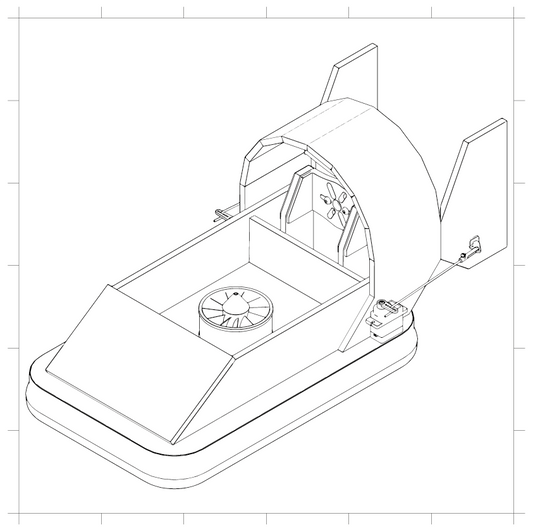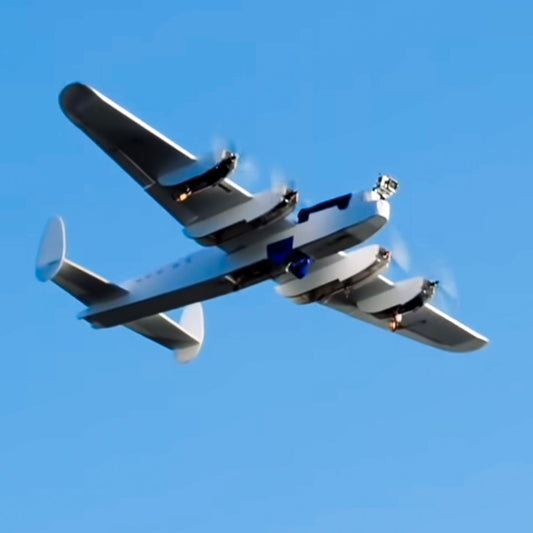Here's the story of my first foray into the world of solar powered aircraft.
The Project Air Team and I have been hard at work building a highly advanced type of aircraft - a solar plane that produces more power from its solar cells than it uses, meaning it sustain flight on just the power of the sun. Following months of planning and building, this article is all about our first steps to building a do-it-yourself solar endurance aircraft, from the initial concept to the nerve-wracking first flight.
YouTube Videos
Watch both parts of the story so far here.
Part 1
Part 2
The Concept
The way we wanted to go with all of this was to develop a DIY solar plane starting with a small prototype before eventually building a larger, more efficient flying wing. The challenge was to create a solar-powered system capable of generating enough energy to keep the plane in the air, even on cloudy days.
The first step was finding the right solar cells. These cells needed to be lightweight and efficient to generate enough power for the motor and propeller. The cells chosen had a 20% efficiency rating, similar to those used by RCTestFlight, which had proven successful in flying planes for over eight hours.

Testing the Solar Cells
The process began with testing the solar cells to see if they could generate sufficient power. Despite some issues—such as faulty cells and the fragility of the components—the team managed to wire the cells in parallel and series to power a brushless motor at 11 volts, the same as a standard model aircraft battery. This setup was tested on the ground, showing promise but also highlighting the sensitivity of the cells to sunlight. Clouds significantly reduced power output, making the project even more challenging.

Building the First Solar Plane: "Solar 1"
With a functioning power system, it was time to build the first solar plane, dubbed "Solar 1." Made from foam board, the plane featured large wings capable of fitting 24 solar cells, providing 11 volts to power the motor. While the design was simple, it served as a proof of concept to see if solar energy alone could keep the plane airborne.

Before attaching the solar cells, the plane was flown with a battery to ensure it could fly. Although the plane was functional, it was extremely draggy, indicating that future designs would need to be more efficient for longer flights. Once the solar cells were attached, the first test flight on pure solar power took place.
Unfortunately, the first attempt occurred late in the day when the sun was low, limiting the available energy. The next morning, with brighter conditions, the plane took off and sustained flight for three minutes on solar power alone. However, banking the plane away from the sun caused power dips, revealing the need for design improvements.

Scaling Up: "Solar 2"
With the success of Solar 1, the team began planning a larger and more efficient aircraft, Solar 2. The goal was to extend flight times and store excess solar energy in a battery using a charge controller called an MPPT (Maximum Power Point Tracker). This setup would ensure the motor had a steady supply of power, even during cloudy periods.
The new plane needed a much larger wingspan to accommodate 60 solar cells, so a flying wing design was chosen for its minimal drag. The wing was constructed from foam board with a central spar for added strength. Careful attention was given to balance, as the plane’s center of gravity would be crucial for stability.

Autopilot System: A New Challenge
To maintain flight for long durations, an autopilot system was needed. This system, built around the Pixhawk flight controller and Ardupilot software, would allow the plane to fly autonomously, circling in the sky while a ground team monitored its progress. Although autopilot systems are well-documented, this was uncharted territory for the team.
Initial autopilot tests were riddled with problems. The plane frequently dived towards the ground when switching to Auto mode. After troubleshooting, it was discovered that the compass was too close to the motor, causing interference. Once this issue was resolved, the autopilot worked successfully, allowing the plane to fly in circles on its own.

The Final Flight: Success and Setbacks
With the new plane built and the autopilot functioning, the team was ready for the final test. The solar cells were carefully installed on the wing, and the plane was prepared for launch. Despite a series of delays, including running low on hot glue and integrating control systems, the plane was finally airborne.

The solar-powered plane flew well, maintaining altitude and demonstrating that the solar cells were generating sufficient power. However, just as everything seemed to be going smoothly, the motor began to lose thrust. Before the team could diagnose the issue, the plane crashed.
Although the crash was a setback, the project proved that solar power could successfully sustain flight in an RC plane. The lessons learned from Solar 1 and Solar 2 will inform future improvements, with the ultimate goal of achieving longer flights and overcoming the challenges of solar-powered aviation.














13 comments
Hi all I’m currently doing a college project trying to recreate a plane like this and I needed to try and find the solar panels as well and I believe I found them or something similar at the website
https://fullbattery.com/products/sunpower-c60-solar-cell
Hi, really great work! It would be really nice if you could send me the link to the solar panels. Keep it up.
Which solar cells did you use and where can I buy them?
Can you send the link that where you buy solar cell